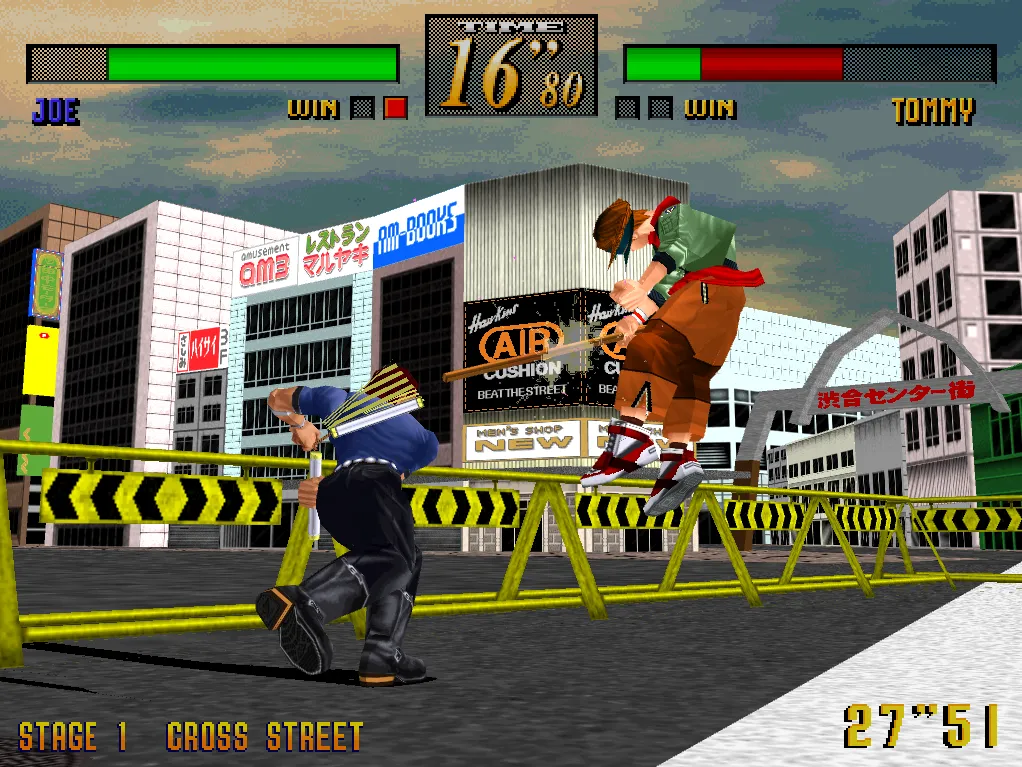
As Namco delivered the weapon-based fighting game Soul Edge in 1995 for the Arcades and a year later for the Playstation, they were once again taking that market by the storm as they already had been going with Tekken 2's success to experiment with new stuff and more complex graphics, SEGA also had some few years of experience with two Virtua Fighter entries and the luxury of powerful hardware, so they decided to take on Namco once again on their rivalry over dominating the arcade scene with Last Bronx in 1996, powered by their Model 2 arcade hardware (which also powered Virtua Fighter 2).
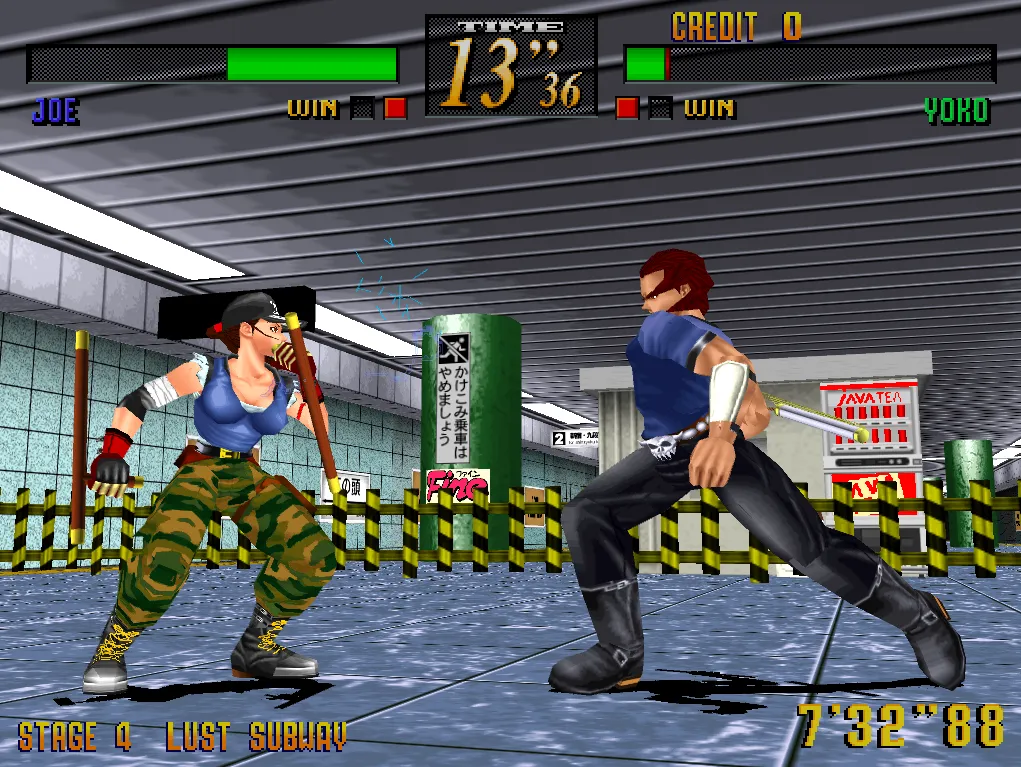
This obscure game's biggest strength was in the style it had (as SEGA really used to experiment with that), with the plot being about a mysterious organization getting gang leaders from all places in Tokyo on a tournament, each character having an interesting design and reasons for fighting (though this is only explained in the home port, as usual), and fights being at many assorted places between these gang members. While the idea of "street fighting" on a game might not sound new (you should know why from that name 😂), the hardware and team's expertise allows for detailed graphics and smooth moving characters complimenting the unique setting and character designs for the game.
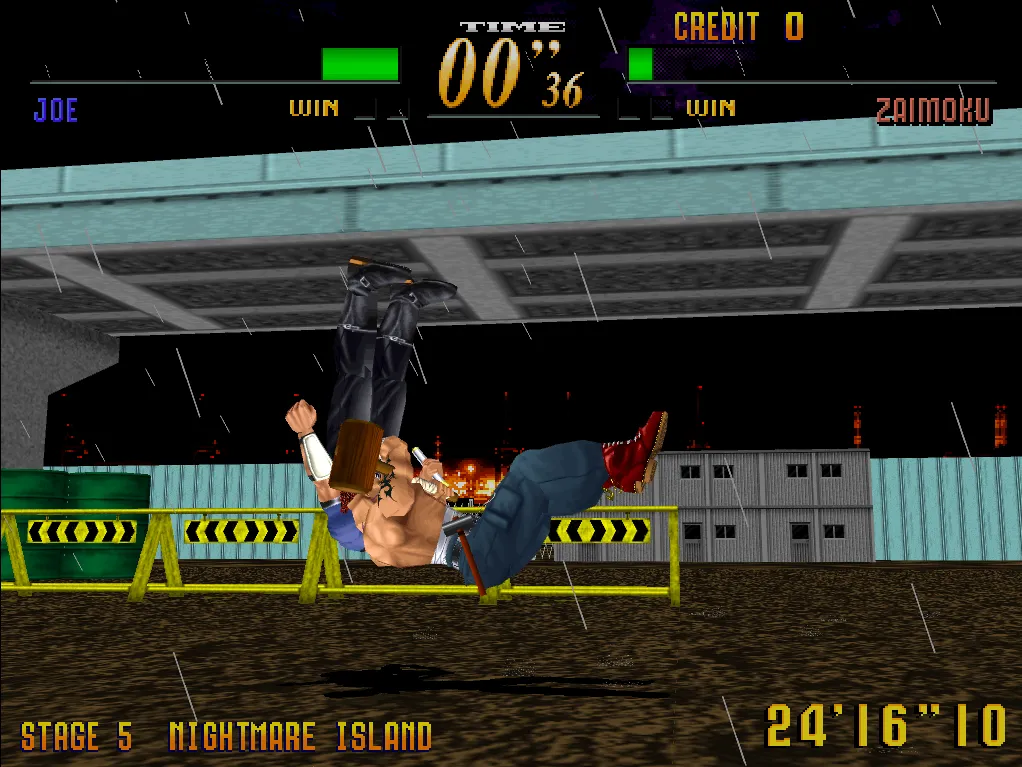
Using the same Punch-Kick-Guard button scheme as Virtua Fighter, most of your Punch attacks are using your weapon, and every character as a different weapon, which leave trails when swinging around, adding to the visual impact from your attacks. Just like most 3D fighting games from this era, juggling combos are hard to do and not very long, but attacks hit hard, and even more so getting to perform a proper combo. The weirdest part is definitely jumping though, having a very high jump that goes up and down pretty fast, and not having many attack options while mid-air.
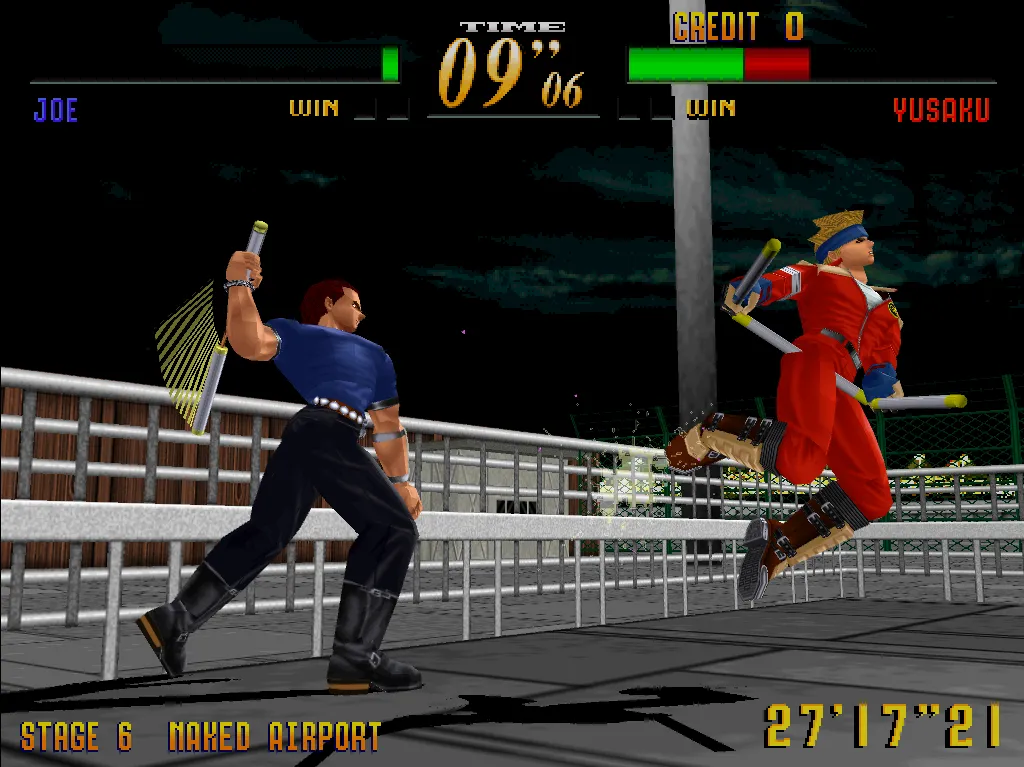
While the game saw enough success in Japan to warrant media like comics, manga, toys, strategy guides, audio dramas, and even a live-action direct to film movie (though just like many other live-action game movies, it sounds to be quite poor)...but the gameplay feeling stiffier than Namco's offerings and the harder chance of appreciation for the game's setting over international shores ended up making the arcade version sell poorly, and while the Saturn and PC ports were competent enough, they also were mixed in reviews (which was specially bad considering the Saturn's declining reputation by itself).

However, the passion and ambition at SEGA staff on projects like this back then is still visible in every place, and with the presentation being very solid (the soundtrack is awesome) along with a game that puts you in short but blazing fights, and details like every character having their own stage but never fighting yourself during the arcade game and fighting the final boss at your own stage instead (unless you beat it under 4 minutes, at which point you unlock a secret fight with a metallic version of your character on a different stage). While it is also unfortunately not avaliable in modern storefronts, getting to try this game through emulation is thankfully a great option, so if you want to check an old 3D fighting game with some street style, you can try this one out.
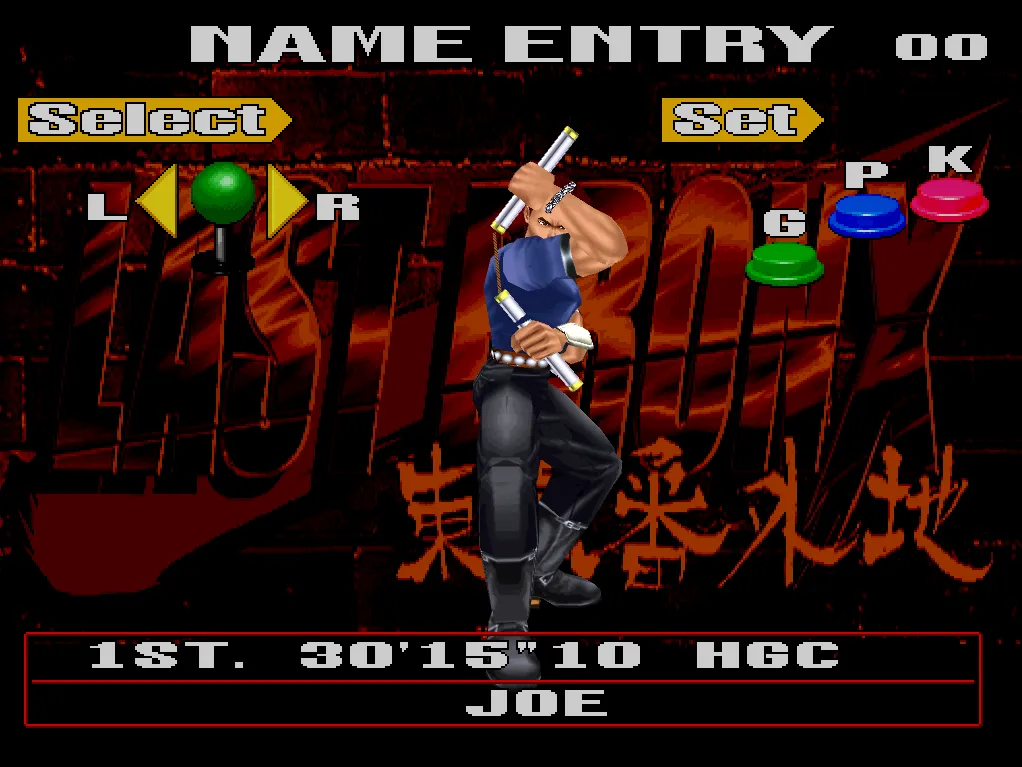
(Oh, and I might talk about the home ports of this game one day through an unique idea of covering home conversions from arcade games, talking about the differences and extras added, but until then...thank you for reading 😉)
Spanish translation with DeepL. All screenshots were captured by myself.
Español

Cuando Namco lanzó el juego de lucha con armas Soul Edge en 1995 para los salones recreativos y un año más tarde para la Playstation, volvió a tomar el mercado por asalto, ya que el éxito de Tekken 2 les había llevado a experimentar con cosas nuevas y gráficos más complejos, SEGA también tenía algunos años de experiencia con dos entradas de Virtua Fighter y el lujo de un hardware potente, así que decidió enfrentarse a Namco una vez más en su rivalidad por dominar la escena arcade con Last Bronx en 1996, impulsado por su hardware arcade Model 2 (que también impulsó Virtua Fighter 2).

El mayor punto fuerte de este oscuro juego era el estilo que tenía (ya que SEGA solía experimentar con ello), con una trama que trataba sobre una misteriosa organización que reunía a los líderes de las bandas de todos los lugares de Tokio en un torneo, cada personaje tenía un interesante diseño y razones para luchar (aunque esto sólo se explica en el puerto doméstico, como es habitual), y las peleas se producían en muchos lugares variados entre estos miembros de las bandas. Aunque la idea de la "lucha callejera" en un juego puede no sonar nueva (ya deberías saber por qué por el nombre 😂), el hardware y la experiencia del equipo permiten unos gráficos detallados y unos personajes que se mueven con fluidez y que complementan el escenario único y los diseños de los personajes del juego.

Utilizando el mismo esquema de botones Punch-Kick-Guard que Virtua Fighter, la mayoría de tus ataques Punch se realizan con tu arma, y cada personaje con un arma diferente, que deja estelas al balancearse, lo que aumenta el impacto visual de tus ataques. Al igual que la mayoría de los juegos de lucha en 3D de esta época, los combos con malabares son difíciles de hacer y no muy largos, pero los ataques golpean con fuerza, y más aún consiguiendo realizar un combo adecuado. La parte más extraña es sin duda el salto, ya que tiene un salto muy alto que sube y baja bastante rápido, y no tiene muchas opciones de ataque mientras está en el aire.

Aunque el juego tuvo suficiente éxito en Japón como para justificar medios como cómics, manga, juguetes, guías de estrategia, dramas de audio, e incluso una película de acción directa (aunque al igual que muchas otras películas de juegos de acción directa, parece ser bastante pobre) ... Pero el hecho de que la jugabilidad se sintiera más rígida que la de las ofertas de Namco y las escasas posibilidades de que se apreciara la ambientación del juego en las costas internacionales terminaron por hacer que la versión arcade se vendiera mal, y aunque los ports para Saturn y PC fueron lo suficientemente competentes, también tuvieron críticas mixtas (lo que fue especialmente malo teniendo en cuenta la decadente reputación de la Saturn por sí misma).

Sin embargo, la pasión y la ambición del personal de SEGA en proyectos como este en aquel entonces sigue siendo visible en todos los lugares, y con una presentación muy sólida (la banda sonora es impresionante) junto con un juego que te pone en peleas cortas pero ardientes, y detalles como que cada personaje tenga su propio escenario pero que nunca luches contra ti mismo durante el juego arcade y que, en cambio, luches contra el jefe final en tu propio escenario (a menos que lo superes por debajo de 4 minutos, momento en el que desbloqueas una pelea secreta con una versión metálica de tu personaje en un escenario diferente). Aunque, por desgracia, tampoco está disponible en las tiendas modernas, probar este juego a través de la emulación es, afortunadamente, una gran opción, así que si quieres probar un viejo juego de lucha en 3D con algo de estilo callejero, puedes hacerlo.

(Ah, y puede que algún día hable de los ports domésticos de este juego a través de una idea única de cubrir las conversiones domésticas de los juegos arcade, hablando de las diferencias y los extras añadidos, pero hasta entonces... gracias por leer 😉)
Traducción al español hecha con DeepL. Todas las fotos capturadas por mí.